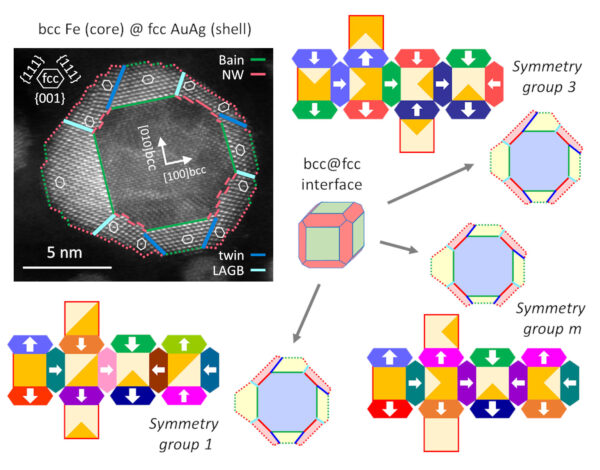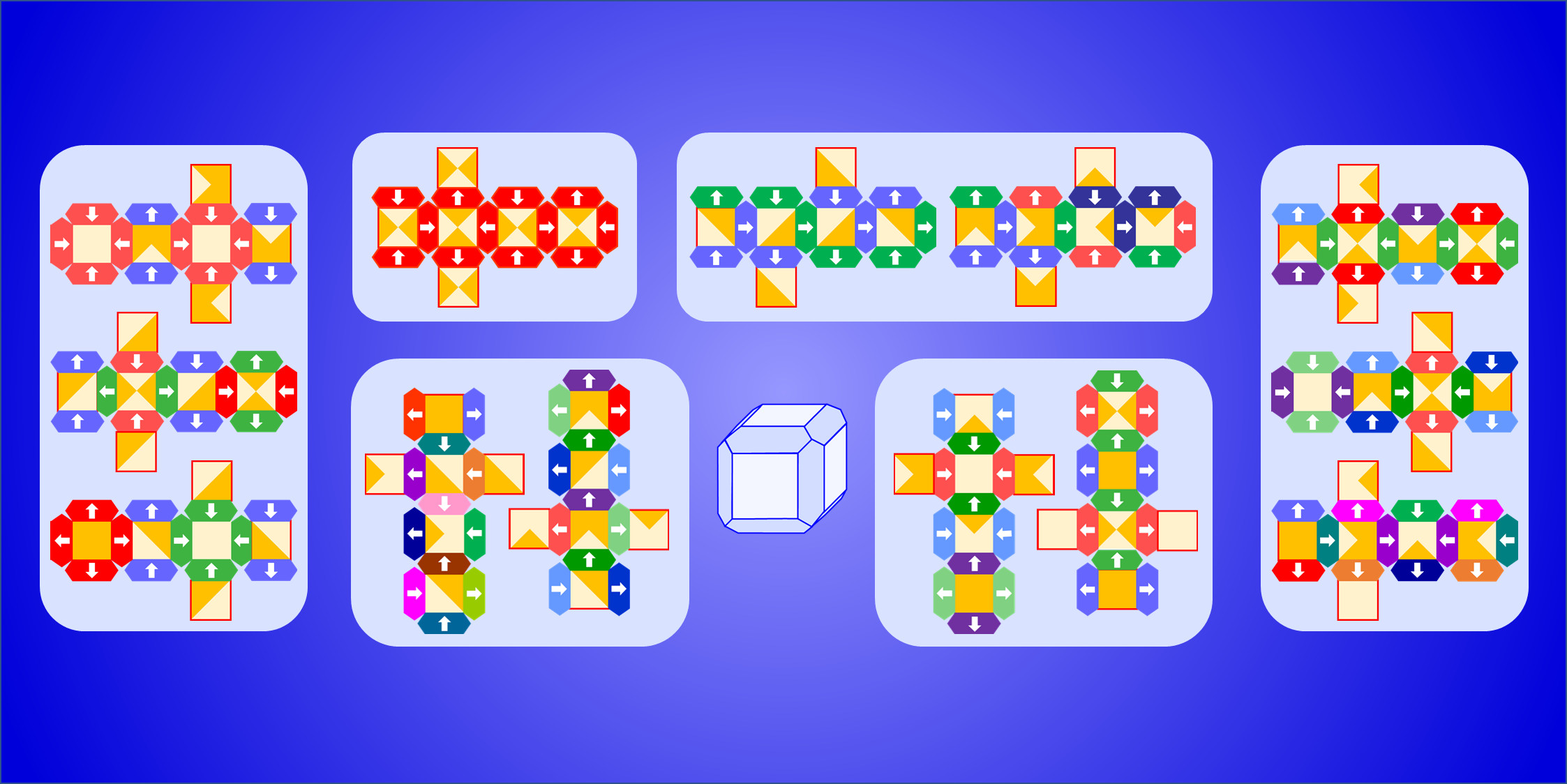Associating iron, gold and silver, it is a matter of symmetry
December 14, 2023
Associating iron, gold and silver under ultrahigh vacuum can lead to the self-assembly of a polycrystalline AuAg alloy shell, growing epitaxially on a single-crystal iron core in the shape of a truncated rhombohedral (or rhombic) dodecahedron. The 18 shell grains have to fit together, and around the core, in a nano-puzzle-like organization, of which there are in theory 186 different solutions, distributed in 13 point groups of symmetry.
Associating iron (bcc structure) with noble metals (fcc structure) can lead to the formation of nanoparticles with a core@shell chemical order, thanks to the conjunction of a miscibility gap, the difference in surface energy, and the existence of two epitaxial relationships.
We thus achieved Fe@AuAg nanoparticles in a Mantis ultrahigh vacuum chamber by iron deposition followed by gold and silver deposition, and we studied their structures with the support of the Centre de Microcaractérisation Castaing. We observed that the iron core can be in the shape of a truncated rhombic dodecahedron covered by a polycrystalline AuAg alloy shell. This shell presents as many nano-grains as the core has faces, namely 18, distributed in 6 grains in coherent epitaxial relationship (so-called Bain) with the iron, and 12 grains in semi-coherent epitaxial relationship (so-called Nishiyama-Wasserman) with the iron. The grains of the two types are joined by an equal number of twins and low-angle grain boundaries (LAGB).
Understanding, predicting and classifying the possible morphologies of these nanoparticles is akin to solving a 3D nanometric puzzle, the pieces of which are the nano-grains and the core. The pieces have to fit together allowing the accommodation of the crystalline lattices, not only between the grains and the core, but also between the grains themselves.
A symmetry analysis shows that there exist, in theory, 186 possible solutions to this puzzle, distributed in 13 point groups of symmetry, all of lower order that the core symmetry (highest cubic symmetry). Symmetry reduction originates from the Nishiyama-Wasserman (NW) epitaxial relationships, at each of the 12 concerned interfaces.
A major consequence is that a population of these nanoparticles will present a variability of morphology and symmetry. If the symmetry breaking is randomly distributed at each NW interface, 80% of the nanoparticles will be asymmetric. Extending this approach to other core shapes also succeeds in predicting dissymmetrical or dramatically off-centered morphologies experimentally observed in Fe@Au nanoparticles with more irregularly shaped cores.

Analysis of a Fe@AuAg nanoparticle observed in section, and three possible reconstructions of its morphology, belonging to groups 3, m or 1, the only ones compatible with the experimental observation. The patterns are developments of the interface in the shape of a truncated rhombic dodecahedron. The symmetry breakings are symbolized by the white arrows and the same color for the hexagons means that there are symmetrical to each other. The yellow shades symbolize the resulting morphology of the shell grains.
Publication:
Morphology and symmetry driven by lattice accommodation in polycrystalline bcc-fcc core-shell metallic nanoparticles
A. Ponchet, N. Tarrat, T. Hungria, M. Benoit, M.-J. Casanove, and P. Benzo
J. Appl. Phys. 134, 205301 (2023)
https://doi.org/10.1063/5.0169818
Contact:
Anne Ponchet | anne.ponchet[at]cemes.fr
Patrick Benzo | patrizio.benzo[at]cemes.fr

